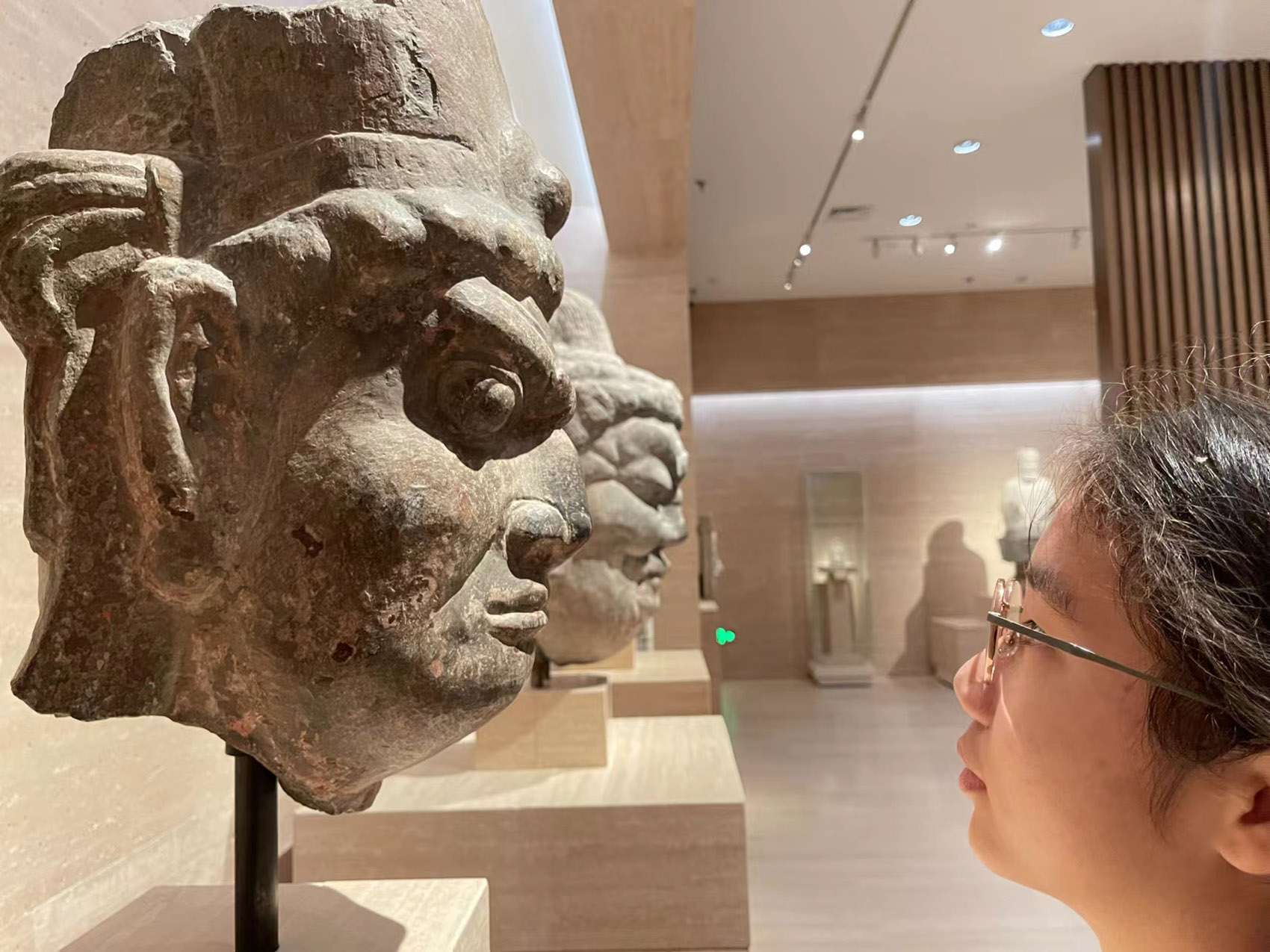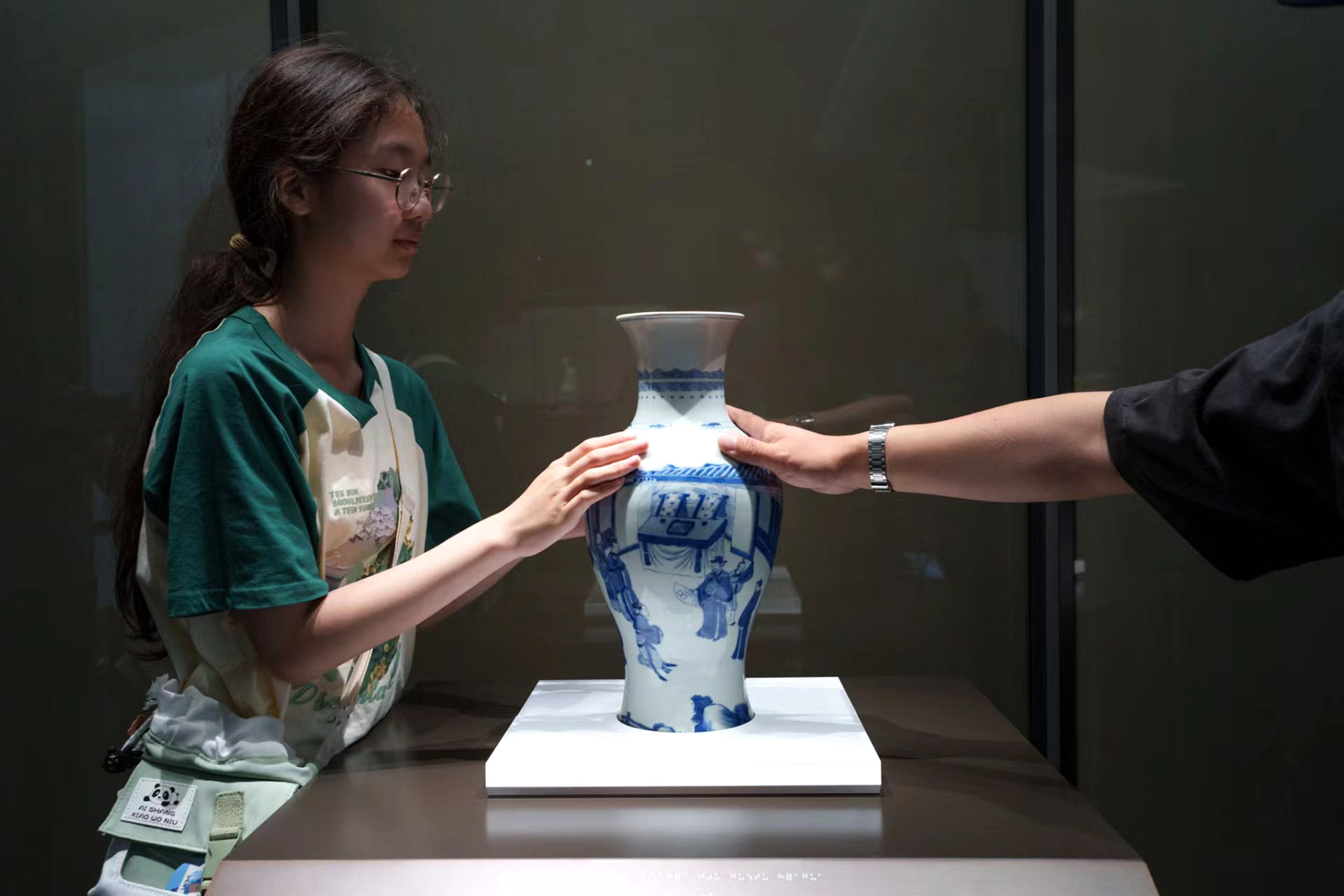Addition of six new permanent galleries since February vastly increases institution's scope and appeal, Zhang Kun reports.

Shanghai Museum East reopened on June 26 after being closed for just over a month, with new galleries and more objects, and artifacts that invite visitors to touch and feel them.
The new wing of the Shanghai Museum had its soft opening on Feb 2 with the exhibition Stars Over China: The Ancient Shu Civilization of Sanxingdui and Jinsha. Upon its conclusion on May 20, the museum closed doors to carry on with the construction, decoration and preparation of additional galleries and spaces.
READ MORE: Sculptor's work takes Chinese culture to the world
Including the Gallery for Ancient Chinese Sculpture and the Ancient Chinese Bronze Gallery, which opened in February, six permanent galleries of ancient Chinese art are now open in the east wing. The four new galleries are dedicated to ceramics, jade, seals, and numismatics.
Also open are two themed galleries, one on the history of Shanghai, and the other called China and the World: Ceramics and Exchanges, which explores the role porcelain played in the development of international trade and communications.
Four interactive spaces have also been introduced: Curio-City, an amusement-park-style gallery for young visitors, The Digital Gallery: Poetic Jiangnan, the Conservation Lab, and new merchandise shops.
"This is the second phase of the grand opening of the Shanghai Museum East," says Chu Xiaobo, director of the institution. "So far, we have finished 80 percent of the planned exhibition space, with 10 new galleries and interactive spaces open to the public."
Construction of the new wing of the Shanghai Museum has taken seven years. It received 1.05 million visitors during the first phase of its soft opening from Feb 2 to May 20. "This was far beyond our expectations. We are greatly moved and encouraged by people's love and support for the Shanghai Museum East," Chu says.
With the additional galleries and new exhibitions, the Shanghai Museum East will be able to receive more visitors every day. "People have complained about how difficult it was to secure a reservation to visit the new facility, so we have doubled the daily quota to 20,000. I believe this will largely relieve the pressure on the reservation system."
People can log into the museum's WeChat mini program, and make a reservation to visit the Shanghai Museum up to 14 days in advance.
The Shanghai Museum was founded in 1952 and had its first home at 325 Nanjing Road West, the location of the Shanghai Race Club in the 1930s. In 1959, the museum moved to 16 Henan Road South, another historical building dating to 1934.
In 1996, the new Shanghai Museum opened on People's Square. The building, with its square-shaped base and circular top is reminiscent of an ancient Chinese caldron. It has floor space of 39,300 square meters, with individual galleries dedicated to categories such as bronzes, sculpture, ceramics, paintings and calligraphy.

The new wing in Pudong New Area has a total floor space of 113,200 square meters, which has allowed the galleries to expand significantly in terms of the number of objects on display.
The ceramic hall is one of the four new galleries open to public. It contains 558 objects, about half of which are on display for the first time. "We decided to remove one of the exhibits from its glass cabinet and allow visitors to touch it," Chu says. "This is rarely done in museums in China, but we believe the multisensory experience of artifacts is important. It helps people better appreciate the detail and the craft of porcelain."
Peng Tao, deputy head of the ceramic department, says that museum was very careful in its selection of the piece to ensure it wouldn't be damaged. "It had to be an underglazed object because otherwise frequent touching could erase the pigments for an overglazed piece … Also, it couldn't be too light or thin, or too valuable."
The object finally selected is a blue-and-white porcelain vase dating to the Kangxi (1654-1722) period. "It demonstrates the main characteristics of blue-and-white porcelain of this particular period," Peng says. "We have arranged a special insurance policy, and are confident that visitors will appreciate and cherish the opportunity to touch it."
The vase is glued securely to its base, and monitored by CCTV cameras, with security staff ensuring orderly visits.
Another piece in the new jade gallery also invites visitors to touch it and is made of 79 kilograms of unprocessed Hetian jade. Traditionally in China, people believed that frequently touching and feeling jade enhanced its warmth and luster.
By encouraging visitors to touch the jade and ceramic objects, Chu says the Shanghai Museum hopes to inspire interest in the history and culture behind them.
The jade gallery has also introduced an innovative lighting system, which makes use of micro spotlights on the side of star exhibits. The new system not only improves visibility of the patterns on surface of objects, but also helps visitors take better pictures.
"In the past, we thought of a museum as an academic institution mainly for the research and protection of artifacts. Now we realize more and more that it is an educational center, where people can experience and learn more about art," says Tang Shifen, Party secretary of the Shanghai Museum.
To enrich the visitor experience, the Shanghai Museum East has opened a new gallery for young visitors called Curio-City. There, children can use shovels and brushes to "unearth" objects on a simulated archaeological site, and place objects in scanners or under microscopes to view their internal structure, inscriptions and other details.
ALSO READ: Ink artist draws on imagination
The museum has also moved part of its conservation lab to the new facility, where visitors are allowed to observe progress through a window, and are sometimes invited in to observe restorers at work. Over the coming three months, Zhang Peichen, a specialist in bronze objects at the Shanghai Museum, will be working on the restoration of a gilded Buddha statue dating to the Ming Dynasty (1368-1644) period.
"We have always worked behind the curtain. I hope people will be able to see that the restoration of artifacts is an interesting job that combines traditional techniques with modern technology," Zhang says.
In collaboration with the Jiushi Group, the Shanghai Museum has introduced a special bus route connecting the two branches of the museum. Visitors can take the bus from either venue at 11 am, noon, 1,2 or 3 pm between Wednesday and Sunday for the same cost as the metro ride.
The Shanghai Museum on People's Square is currently presenting The Glory of Ancient Persia: Treasures from Iran until Oct 7, and the widely anticipated exhibition, On Top of the Pyramid: The Civilization of Ancient Egypt, will open to public on July 18 and run until August 2025.
Contact the writer at zhangkun@chinadaily.com.cn


